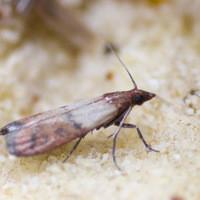Often referred to by its common moniker the pantry moth, the Indian meal moth can be easily identified by the shades of lighter and darker brown on its wings, separated by a charcoal stripe. Granted, this is only the adult moth – not even the most dangerous stage of the bug’s life cycle. Adult Indian meal moths infest food pantries in order to provide their larvae, the true threat to your grub, access to all the nourishment they need to grow big, strong, and ready to perpetuate the cycle.
The Way The Indian Meal Moth Infiltrates Hartford Homes
From tiny egg to hungry larva, from stagnant pupa to fully grown adult, the Indian meal moth can threaten to disturb the peace and comfort of your kitchen or food storage rooms. So the question begs to be asked: how could one, if not even more, of these pantry pests abandon their outside home and sneak into your lovely home in Hartford, Connecticut? There are many potential strategies, but one flies above the rest as the most likely.
Oftentimes, the Indian meal moth doesn’t infiltrate homes through the houses themselves. In fact, it is usually an unintentional side effect of being brought home. Adult moths simply find themselves drawn to the bright lights and wealth of meals present in a grocery store or supermarket, where they inevitably dig their way into bags of dried food and lay their eggs before departing. Sooner or later, the eggs will hatch and the hungry larva begins to feed. At any point in these larvae’s life cycle, their sanctuary may be purchased by an unaware shopper, allowing the growing bugs to end up in an entirely new environment, albeit one not lacking in other meals.
Strategies For Preventing An Infestation Of Indian Meal Moths
After you discover pantry moths hiding among your shelves, there is little you can do until the population is wiped out to prevent the potential of future attacks. If your cupboards appear clean, now is the time to enable a number of do-it-yourself strategies to preserve the state of your preserves, such as those listed below:
- Don’t be greedy! Refrain wherever possible from keeping the same containers of food for over six months’ time, so as to keep hungry pests on their minuscule toes. This will also prevent pantry moths from getting too comfortable in any one spot.
- Periodically, try and completely empty your cupboards so you can dust and decontaminate the shelves themselves: every last nook and cranny! By the end of the process, make sure your pantries are dried off before you shelf your food again.
- Further, keep your cupboards clean by covering your bases with sheets of shelf paper. Use them to provide ease of access to pantry inspections – just be prepared to replace them over time as appropriate.
- Remember the importance of inspecting the meals you buy! Adult moths may not be hiding within the next bag of rice you pick off the shelves, but if you spot any worrisome holes, regardless of size or discount, put it away and don’t look back, as there may be eggs or even larvae inside.
- When you return to your beautiful Hartford home with a trunk’s worth of miscellaneous groceries, sanction off the packs of grub that Indian meal moths love, mainly dry and grainy foods, and conduct a thorough open bag inspection. Having double-checked the safety of your purchase, move the meals to durable, tightly sealed food canisters and shelf them as you see fit.
By far, the best way to get rid of Indian meal moths in all stages of their life cycle is to enlist the help of knowledgeable and skilled professionals. Call American Pest Solutions for expert treatment and prevention solutions no matter the situation.

